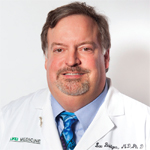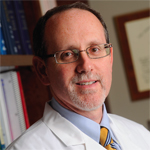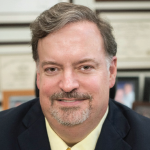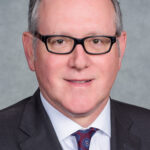The strong leaders of the division, many of whom trained at Harvard Medical School, says Dr. Bridges, have created “the longstanding reputation we have for clinical and research excellence, one of the unique aspects of our division.”
And that excellence, in turn, has attracted strong mentors to the division. Kenneth G. Saag, MD, MSc, was attracted to UAB 19 years ago, based on the established record of collaborative and interdisciplinary research, as well as on the opportunity he saw “to grow a program in epidemiology and outcomes research.” This was accomplished first with university resources and then federal funding. “We’re very passionate about the support from both NIH and AHRQ training grants that give us the infrastructure to train the next generation of investigators,” Dr. Saag says.
Of his 2013 Excellence in Investigative Mentoring Award, Dr. Saag remarks, “While that honor was well appreciated, I think that it was a testament to the environment here at UAB and our philosophy that we have to create the right environment and give junior people protected time so that they can launch their careers and be successful.”

Division Director S. Louis Bridges Jr., MD, PhD
Dr. Curtis, who trained with Dr. Saag, has attained national success while part of the division, notably receiving the 2012 Henry Kunkel Young Investigator Award from the ACR. Dr. Curtis notes that supportive leadership has been key.
Dr. Curtis emphasizes: “Among the three most important components that contribute to success for a junior investigator are: ‘It’s your mentor, your mentor and your mentor.’”
He credits Dr. Saag’s mentorship with helping him advance his own research and Dr. Bridges with the ability to bring in and nurture new talent. “Dr. Bridges,” he says, “is well respected as a researcher, but he also brings a level of human empathy and altruism to help create an environment conducive to collaborative projects.”
Inclusiveness Emphasized
Given UAB’s myriad research centers, communication is key, says Dr. Bridges, for staying abreast of colleagues’ achievements. “We make strong efforts—through the Council of Center Directors meetings and other venues—to make sure we communicate, collaborate and synergize, so that we work together instead of reinventing the wheel.”

Kenneth G. Saag, MD, MSc
A yearly research day and a weekly journal club affiliated with the Comprehensive Arthritis, Musculoskeletal, Bone and Autoimmunity Center (CAMBAC), executive committee meetings for the NIH-funded Center for Clinical and Translational Sciences (headed by past Director Dr. Kimberly), symposia and seminars round out the abundant meeting calendar.

